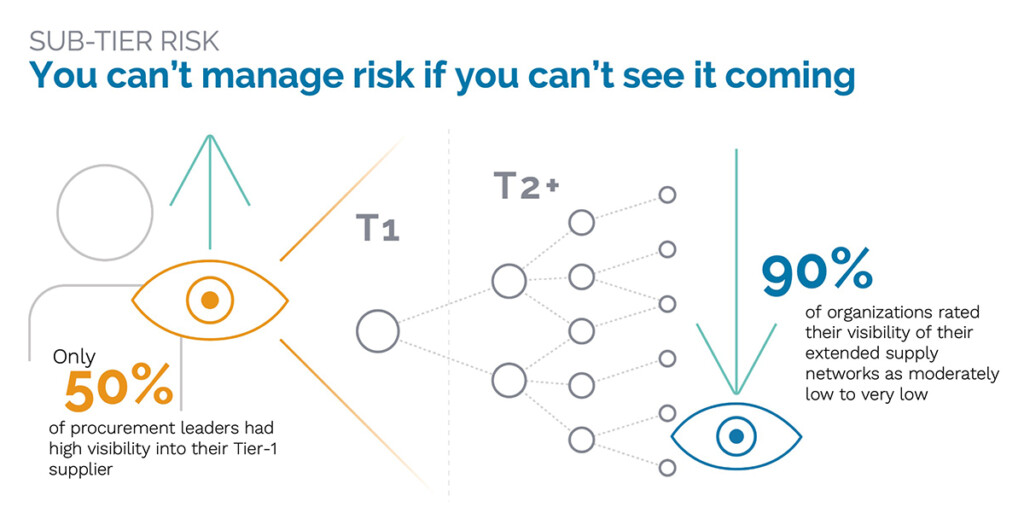Supply chain visibility is the ability to access real-time data related to the whereabouts, movement, and status of products within the supply chain. It forms a critical bridge between different stages of the supply chain, from the procurement of raw materials to the delivery of the final product.
Why is supply chain visibility important?
Supply chain visibility plays a pivotal role in effective risk management. With increased globalization, supply chains have become more intricate and intertwined. This complexity has made managing risk more challenging.

Figure 1: Most procurement leaders rate their supply chain visibility as low, with half actually having high supply chain visibility.
SEE HOW TO APPLY SUPPLY CHAIN VISIBILITY TO ENHANCE OPERATIONS: FREE REPORT
Enhanced Risk Management
Supply chain visibility allows for early identification and mitigation of potential disruptions, helping businesses navigate uncertainties more effectively.
Empowered Decision-Making
It offers improved operational control by providing real-time data and insights, empowering supply chain managers to make informed decisions.
Stronger Supplier Relationships
Visibility allows open communication and collaboration, leading to better evaluation of supplier performance and more reliable sourcing.
Despite its benefits, achieving supply chain visibility can be challenging due to inherent complexity, supplier resistance, and the costs and resource constraints associated with implementing visibility measures.
Supply chain visibility graph technology
Graph technology, more specifically graph databases, offers a more efficient way to query information and visualize relationships within the supply chain network. This technology helps identify hidden patterns, correlations, and anomalies that may signal disruptions or risks.
The three pillars of supply chain visibility
- Network visibility: This involves understanding supplier operations, compliance with standards, and risk assessment based on data regarding the location and status of supplier facilities.
- Material flow visibility: By merging supplier network data with the company’s own procurement and bill-of-materials data, companies can trace the route taken by components and materials through the network, supporting risk scoring and ESG compliance initiatives.
- Logistics visibility: This involves tracking the position and status of shipments and individual components in the network, helping to identify potential delivery delays and support risk management.
The bottom line for supply chain managers
For supply chain managers, visibility is invaluable. It enables effective risk management, facilitates decision-making, and fosters stronger supplier relationships. By supporting all aspects of the supply chain from planning and sourcing to manufacturing and delivery, supply chain visibility contributes to a robust and financially secure operation in an increasingly complex and volatile world.
SEE HOW TO APPLY SUPPLY CHAIN VISIBILITY TO ENHANCE OPERATIONS: FREE REPORT